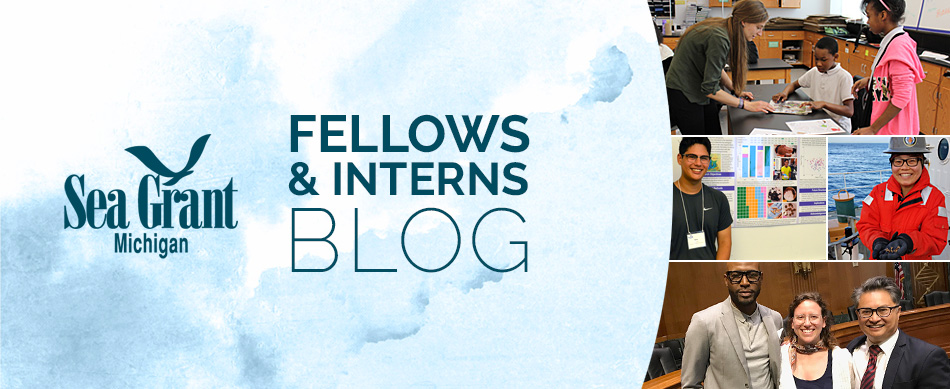 Eight months into my Knauss Fellowship and the time has flown by! I accepted a position with the U.S. Fish & Wildlife Service (USFWS) Division of Fisheries and Aquatic Resources Conservation at the national office in Ballston Virginia. I work on the National Fish Habitat Partnership (NFHP) and the National Fish Passage Program (NFPP), which focus on the restoration of aquatic habitat across the nation. I have learned a lot from both programs as they approach restoration from different angles.
Eight months into my Knauss Fellowship and the time has flown by! I accepted a position with the U.S. Fish & Wildlife Service (USFWS) Division of Fisheries and Aquatic Resources Conservation at the national office in Ballston Virginia. I work on the National Fish Habitat Partnership (NFHP) and the National Fish Passage Program (NFPP), which focus on the restoration of aquatic habitat across the nation. I have learned a lot from both programs as they approach restoration from different angles.The NFPP provides financial resources to the USFWS regions to identify and implement fish barrier removals, primarily dams and undersized or misplaced culverts. At the national office we work to coordinate the regional programs, collect and maintain data on accomplishments and outcomes of the program, gain congressional support for the program, and develop outreach campaigns and materials to build awareness of the problems facing fish in our nation. The NFPP is a top-down approach to restoring America’s rivers. In contrast, NFHP takes a different, bottom-up approach to restoring aquatic habitat. Fish Habitat Partnerships comprised of federal, state, tribal, NGOs and private organizations have formed across the nation either focused on a species or geographic area to restore. These partnerships rely on local knowledge and expertise to coordinate and prioritize restoration efforts. At the national office we coordinate the activities of the USFWS regional staff and oversee the distribution of restoration project funds. We also work with the Board of Directors and its subcommittees, providing support to their efforts to manage the Fish Habitat Partnerships.
One of the greatest parts about the past eight months has been the variety of activities I’ve been able to engage in and the incredible access I’ve had to experienced natural resources professionals and upper leadership throughout the USFWS. I’m currently part of a core team revising the National Fish Habitat Action Plan, the guiding document of the NFHP. This has been a great opportunity to work with well-respected leaders from state and federal agencies, as well as NGOs and academia to influence the strategy of fish habitat restoration across the nation for the next five years. I’ve briefed the highest levels of USFWS management as well as congressional offices on NFHP and NFPP, demonstrating the value and accomplishments of both programs. I was also offered the opportunity to go on a one month detail to the regional office in Portland to gain a better understanding of what the USFWS is doing in the field. While there I traveled all over Oregon and Washington performing fish surveys, reviewing a Bull Trout reintroduction monitoring program, and developing a roll-out strategy for a new web-based decision support system being created to help target aquatic habitat restoration efforts.
 I’ve truly enjoyed being a Knauss Fellow. The network of fellows here in the DC area is extensive, strong and well recognized by environmental professionals throughout the nation. We are everywhere, which should help as I look towards finding a full-time job in the next few months. I highly recommend becoming a Knauss Fellow. The experience you gain and the people you meet are invaluable. I’m sure the next few months will fly by too quickly!
I’ve truly enjoyed being a Knauss Fellow. The network of fellows here in the DC area is extensive, strong and well recognized by environmental professionals throughout the nation. We are everywhere, which should help as I look towards finding a full-time job in the next few months. I highly recommend becoming a Knauss Fellow. The experience you gain and the people you meet are invaluable. I’m sure the next few months will fly by too quickly!- Colin
2011 Knauss Fellow


